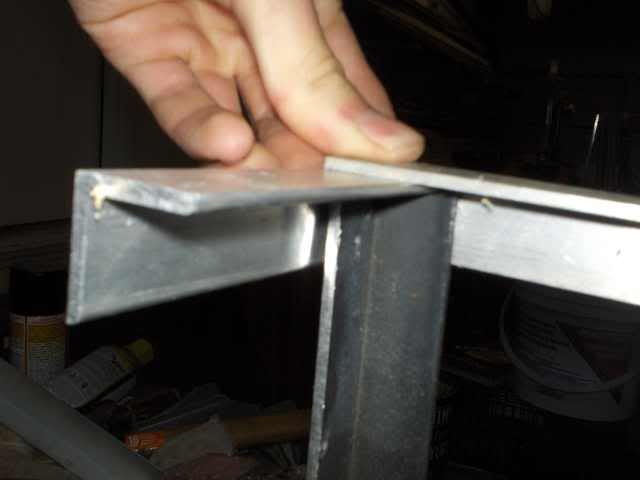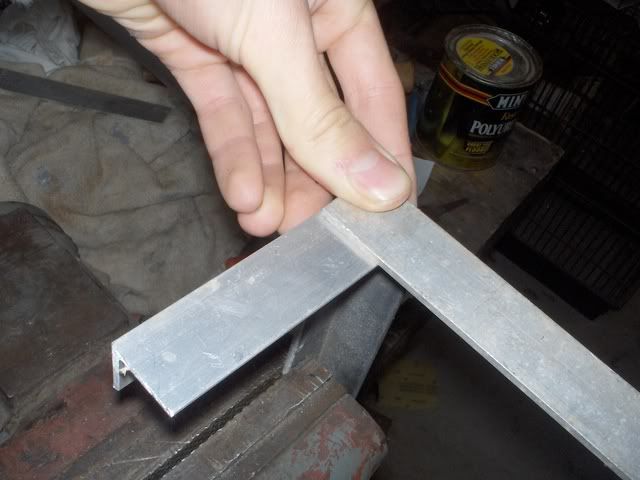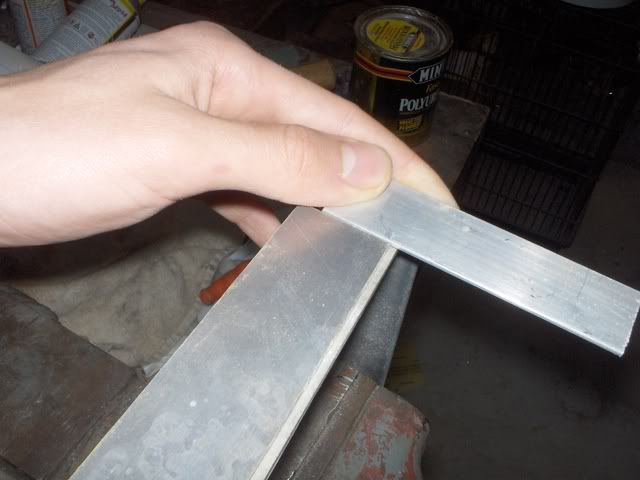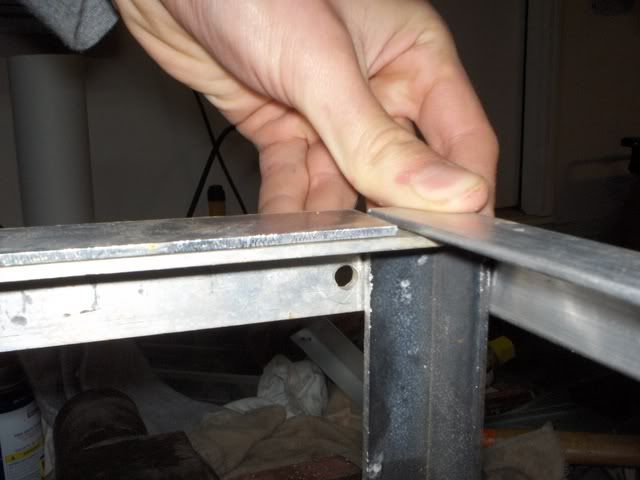Got it....other than he decided to use a plywood deck
Ah, well, the exposed rivets pose less of a problem there, as they will squish into the plywood.
Anyway, here is the answer to the question of how that can be done with angle. I grabbed a few pieces out of the scrap bin.
Say this is how you do your legs. The piece in the vice is the leg, and the pieces I am holding are your horizontals. One piece (top one) can extend both ways, making a T. If you need to make an X, or lower case t (depending on how you look at it :lol: ), you will need a second leg, or a different method.
That works, except now you have an eighth inch height difference in the two angles. Solve that by putting a piece of 1/8 inch flat bar in the low places. If your angle is 1.5 inch, the bar needs not be more than an inch wide.
Obviously the piece I grabbed isn't the same thickness, or width, but I didn't feel like digging further, or cutting a piece down, so that should get the picture across.
Don't put a rivet in your spacer until it comes time to put your deck down. Then, rivet all the way through it. Same goes for the tops of the corners, where my thumb is. Put rivets in the side, but then have the top one go through the deck into both layers, after you get your deck installed. Will lock everything together, and keep things from flexing.
Obviously there is more than one way to skin a cat. This is just my method. Cheap and easy works just fine for most people, but for me, I am building the boat just as much for the sake of building the rig as I am to have a boat the way I want it to fish out of. Since building it is more than half the fun of both building and fishing together, at least to me, you can bet I will go for overkill, especially when it comes to playing with aluminum.





